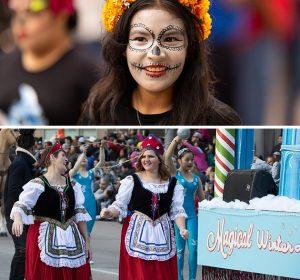Exploring Cultural Differences Between Mexico and the USA

The world is a beautiful tapestry of diverse cultures, each offering its unique customs, traditions, and ways of life. Mexico and the USA, as neighboring countries in North America, possess rich cultural heritages shaped by their history, people, and geographical influences. In this blog, we will delve into the fascinating cultural differences between these two nations, celebrating the richness of their distinct identities while appreciating the value of cross-cultural understanding and harmony.
- Language and Communication
While Spanish is the official language of Mexico, it is essential to note that Mexico is a diverse country with a number of indigenous languages spoken by various ethnic groups. These indigenous languages, such as Nahuatl, Maya, Mixtec, Zapotec, and others, contribute to the cultural richness of the nation. In the USA, English is the most widely spoken language, but due to its multicultural population, you can hear a multitude of languages spoken across the country, reflecting its immigrant heritage.
Additionally, communication styles can differ between the two cultures. Mexicans are generally known for their warm and expressive communication, using gestures and body language to emphasize their points. The use of honorifics and polite language, such as "usted" (you, formal), is common, especially when addressing elders or people in positions of authority. In contrast, Americans tend to be more direct and value clarity in interaction. Politeness is expressed through "please" and "thank you" but might not involve as many gestures as in Mexican communication.
What to know about The Use of “Honorifics” in Asian Languages?
- Family and Social Structure
Family plays a central role in Mexican culture, with strong family ties and close-knit relationships, fostering a sense of collective responsibility and support. In the USA, while family bonds are also important, individualism is more pronounced, and it is common for young people to move out and live independently once they reach adulthood.
- Time Perception and Punctuality
Time perception can vary across cultures, and this is no different for Mexico and the USA. In Mexico, there is a more relaxed attitude towards time, and punctuality might not be as rigidly observed as in the USA. "Mañana" (tomorrow) is a term often associated with a laid-back approach to time. Conversely, in the USA, punctuality is highly valued, and being on time for appointments, meetings, and social gatherings is considered a sign of respect and professionalism.
- Cuisine and Dining Etiquette
Mexican and American cuisines are both delicious, but they showcase different flavors and culinary traditions. Mexican cuisine is renowned for its rich use of spices, colorful ingredients, and diverse regional dishes, such as tacos, tamales, and mole. On the other hand, American cuisine is a melting pot of influences from around the world, and dishes like hamburgers, hotdogs, and apple pie have become emblematic of American culture.
Dining etiquette also differs slightly between the two countries. In Mexico, it is customary to wait until the host invites you to start eating, and meals are often leisurely affairs. In the USA, diners may begin eating once their food is served, and meals are generally more time-efficient.
- Holidays and Celebrations
Both Mexico and the USA celebrate a range of holidays, but the emphasis and customs associated with these occasions can differ significantly. In Mexico, cultural and religious festivals, such as Día de Muertos (Day of the Dead) and Independence Day are widely observed and marked by colorful parades, music, and traditional dances.
Religion holds significant importance in both Mexican and American cultures, but they have different religious landscapes. Mexico is predominantly Catholic, and Catholic traditions deeply influence the country's festivals, rituals, and daily life. Religious festivals, like Semana Santa (Holy Week) and the Feast of Our Lady of Guadalupe, are celebrated with great fervor and are often accompanied by processions, music, and elaborate decorations.
In the USA, the population is more religiously diverse, with a mix of Christians, Jews, Muslims, Hindus, Buddhists, and others. This diversity is reflected in the celebrations of various religious holidays across the country. Additionally, the USA's secular holidays such as Halloween and Thanksgiving have become important cultural events that are celebrated nationwide. Holidays like the Fourth of July as well as Thanksgiving are celebrated with family gatherings, fireworks, and festivities.
- Personal Space and Physical Contact
Cultural norms regarding personal space and physical contact can vary widely. In Mexico, people are generally more comfortable standing close to each other during conversations, and touching or patting someone on the back during interactions is common. In the USA, personal space is more pronounced, and people tend to maintain a greater distance during conversations.
As we conclude our exploration of cultural differences between Mexico and the USA, we must remember that these observations are generalizations and that individual experiences may differ. Embracing cultural diversity and learning about each other's traditions and customs is crucial for building a harmonious and inclusive society. By celebrating our differences and fostering cross-cultural understanding, we can strengthen our global community and appreciate the rich tapestry of humanity that surrounds us.
sources blog:- https://thespanishgroup.org/blog/exploring-cultural-differences-between-mexico-and-the-usa/
- Art
- Causes
- Crafts
- Dance
- Drinks
- Film
- Fitness
- Food
- الألعاب
- Gardening
- Health
- الرئيسية
- Literature
- Music
- Networking
- أخرى
- Party
- Religion
- Shopping
- Sports
- Theater
- Wellness
- IT, Cloud, Software and Technology


